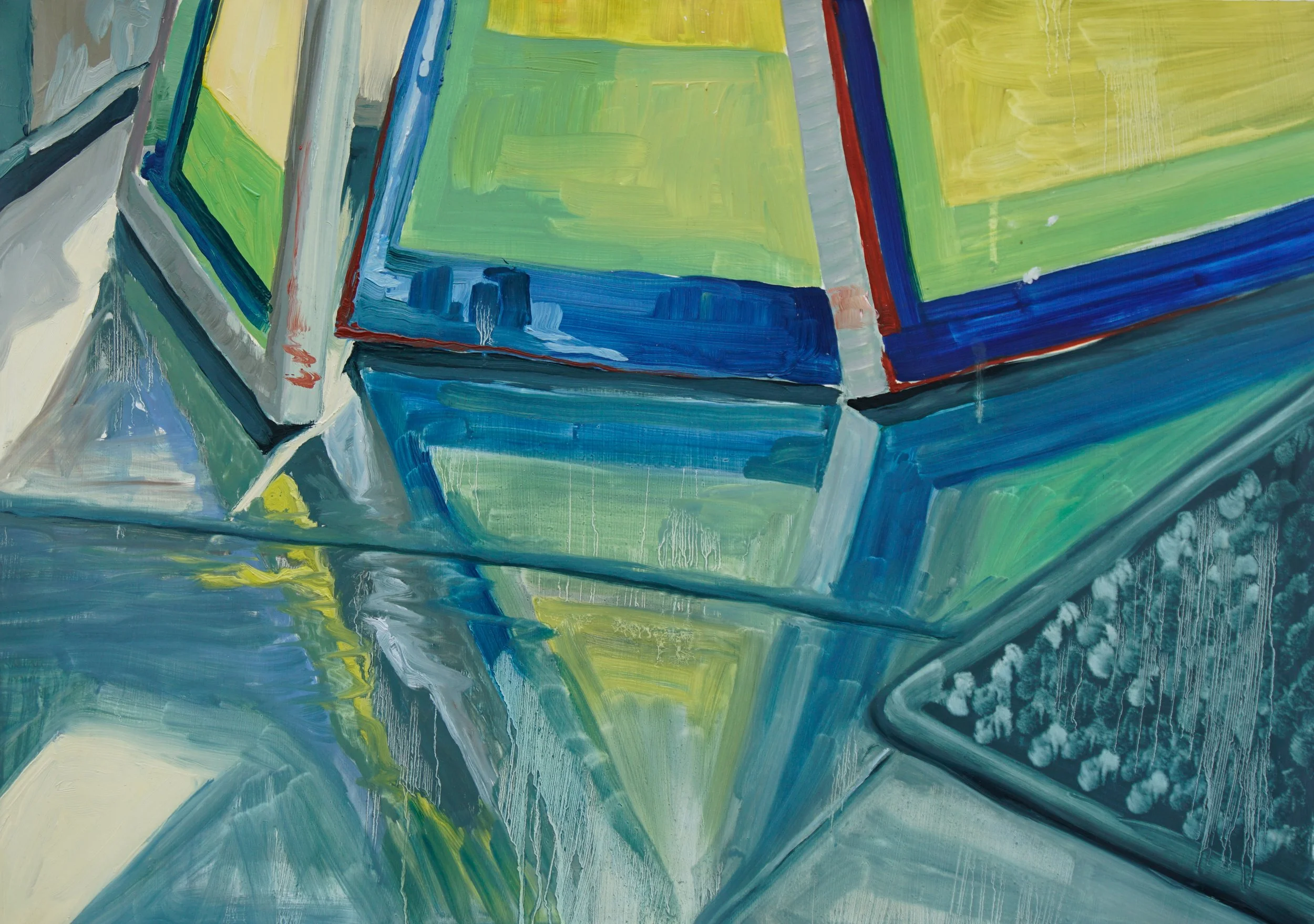Gazing and witnessing. For me, these two words emerge as fundamental to how we may construct the idea of painting in a contemporary practice. The words that I have pulled are ones that are frequently used in medical practice, in trying to parse out the role of the doctor in relation to the patient, as a viewing, caretaker, authority regarding another’s person’s body. It becomes a vulnerable and intimate space that cannot deny an implicit power hierarchy between the two. Therefore, the implementation of these two words in the space is necessary to name the act and subvert previously inherent dynamics. The gaze, a concept that emerges from Foucault’s Naissance de la Clinique as well as from the concept of the panopticon in Surveiller et Punir, is a type of looking that removes agency from the subject. In the medical sense, this necessarily relate to the patient. But I believe that it relates to painting as well, and must be more broadly placed into context with the myriad of subjects that a painting can deal with—figurative, abstract, landscape, etc. For me, these words relate to the following citation from Merleau-Ponty:
The painter is there, strong or frail in life, but sovereign incontestably in his rumination on the world, sovereign without any other “technique” than the one that his eyes and hands are given by means of seeing, by means of painting; he is there relentless to pull from this world, in which the scandals and achievements of history resound, canvases which will hardly add to the angers or the hopes of humanity; and no one mutters. What, then, is the secret science which he has or which he seeks?
The idea that the painter is ruminating on life, is a viewer who, in some respects, is not necessarily held accountable but is a translator of space and time, seems to remove the idea of responsibility in art creation. It seems justify the act of gazing as the singular space of painter, which does not acknowledge that the idea of the painter as witness could (and should) be the relevant point of reference. As Merleau-Ponty puts it, in one respect: “Only the painter is entitled to gaze upon everything without being obliged to appraise what he sees”. Yet the painter is a biased, opinionated human being, and the role of painting can hold tangible, political and social repercussions. Merleau-Ponty later highlights how “the picture relates to anything at all among experienced things only on the condition of being first of all “auto-figurative”” which emphasizes the place of the painter within each painting, even if it is not visible. This is what I would call a component of the witness, of recognizing the place the viewer holds in the story-making. Furthermore, the painter does have a role in shaping how people view an idea, an emotion, a connection, a historical moment, an imaged future, a forgotten past, etc. Before contextualizing what I mean, I want to draw on a parallel example from Sander Gilman’s book Health and Illness: Images of Difference in which he explores the role of images in historical analyses, how so frequently, the image is perceived as a neutral, exacting documentation of a past. Yet, the overarching point that he makes is how the picture is created by a human whose perspective influenced and informed the final product. Instead of the picture being a type of documentation, it is really representation—the same space that a painting inhabits.
The idea of the painting as effecting something more that this idea of “rumination”, an idea that lends to a passive viewing rather than an active affecting, characterizes why a painting may never be complete, why its place and meaning will change over time, why even in its own “moment” it may be questioned and controversial. For example, Dana Schutz’s Open Casket can, in some ways, epitomize the space of gazing versus viewing, of rumination versus action. What does it achieve and who is given authority to represent (not document)? What does it mean when a painting may not properly ask its viewers to witness but to instead gaze, and how does that change the role of a painter’s relationship to a general population?
To add, the idea of viewing the painting as simply neutral is a misconception. Take, for example, Foucault’s The Order of Things in which he opens up with the detailed analysis of Las Meninas of Velasquez. We may, with this description, take it to represent a growth of the modern painting, defining the complicated space of representation. Yet, what Jesse McCarthy’s essay “The Master’s Tools” (potentially referencing Audre Lorde’s The Master’s Tools Will Never Dismantle the Master’s House) in his new book Who will pay reparations on my soul? demonstrates is that the creator is not a neutral figure, that the value given to a painting gives value to the creator, which in this case is one that owned a slave that Kehinde Wiley places in “Napoleon Leading the Army Over the Alps” to subvert a dominate narrative. Therefore, a painting must be understood in relation to the body and mind of the painter too, given that Merleau-Ponty states how “Visible and mobile, my body is a thing among things; it is one of them. It is caught in the fabric of the world, and its cohesion is that of a thing”.
















